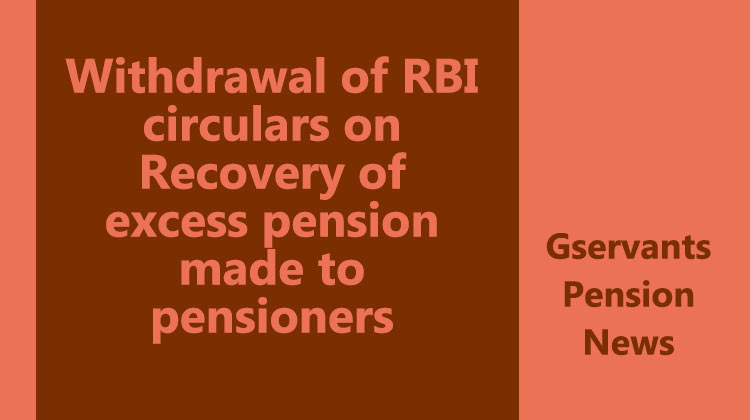Ministry of Finance, Department of Expenditure has issued a brief on Implementation of Unified Pension Scheme (UPS) with effect from 01.04.2025 and the Scheme Details and Eligibilities
Table of Contents
Implementation of Unified Pension Scheme effect from 01.04.2025
BRIEF
Ministry of Finance, Department of Expenditure
Dated: 24.08.2024
Unified Pension Scheme (UPS)
Cabinet has approved introduction of Unified Pension Scheme (UPS) to improve the National Pension System (NPS) for Central Government employees. Government employees have been representing that they need certainty in their pension, in particular assurances regarding pension, family pension, minimum pension and inflation indexation. While Government is keenly aware of these concerns, Government also has a responsibility to protect the interest of the common citizen so that pension does not lead to a huge burden of higher taxes for them in future.
Keeping this in view, Government had appointed a committee, headed by the Finance Secretary to review the existing NPS and to make recommendations in the matter. The Committee consulted the State Governments as well as the representatives of the employees and considered suggestions from associations, experts, etc. The Committee also looked at international experience and consulted the Reserve Bank of India. The Committee has now submitted its report. The UPS is based on the recommendations of the Committee.
The recommendations of the Committee were discussed with representatives of the employees through the Staff Side of the National Council of Joint Consultative Machinery (JCM). The employee representatives gave valuable suggestions to the Committee in reaching a broad consensus.
The Broad contours of UPS include the following:
Employees who have adequate service will get an assured pension of at least 50% of the last 12 months’ average salary as pension.
Minimum pension of Rs 10,000 per month will be given to those with at least 10 years’ service.
Family pension to spouse will be given @60% of the pension.
Dearness relief will be given on the assured pension, minimum pension and family pension.
In addition, a lumpsum will be provided at the time of retirement.
There will be no increase in the contribution from employees but Central Government will increase its contribution. Those who have already retired under NPS will also be eligible for this benefit. Arrears will be paid to such past retirees after adjusting the withdrawals already made by them.
Read : Which is More Beneficial NPS or UPS ?
The scheme details and eligibilities
The scheme details and eligibilities are given below.
The employee contribution shall remain un-altered at 10% of (Basic pay + DA). The Government contribution will increase from the present 14% to 18.5%. The pension corpus will be divided into two funds:
- an individual pension fund to which the employee contribution (10@% of basic pay and DA) and matching Government contribution will be credited.
- a separate pool corpus with additional Government contribution alone (18.5% of basic and DA of all employees).
The employee can exercise an investment choice for the individual pension corpus alone. The employee can withdraw upto 60% of the individual pension corpus with proportionate reduction in assured pension.
Assured Pension for minimum qualifying service of 25 years
Assured pension will be based on the ‘default mode’ of investment pattern notified by PFRDA and considering full annuitization of individual pension corpus. In case the benchmark annuity is lower than the assured annuity, the shortfall will be made good. In case the individual employee corpus generates higher than assured annuity (based on investment choice exercised by the employee), the employee will be entitled to such higher annuity. In case however, the annuity generated is lower than the default mode, the top up provided by Government through UPS will be limited to the benchmark annuity
Full assured pension will be available for a minimum qualifying service of 25 years. For lesser service, starting from at least 10 years, pro rata assured pension will be given.
Employees would have a choice to opt for UPS. An employee could choose to continue with the NPS, if s/he so desires.
The UPS will be given effect from 01.04.2025. The necessary administrative/ legal support framework will be put in place.
The scheme can also be adopted by State Governments. This is expected to benefit over 90 lakh employees (23 lakh Central Government employees, 3 lakh employees of Central Autonomous Bodies and another 56 lakh employees of State Governments and 10 lakh employees of State Autonomous Bodies, if adopted by the State Governments).
While benefiting the employees, it will also safeguard the welfare of the common citizens because the scheme will be fully funded, i.e. Government will fully pay its contribution each year and will not postpone the pension expenditure, thus preventing fiscal hardship to future generations of citizens.
Follow us on YouTube Channel, Telegram Channel, Twitter & Facebook and WhatsApp Channel for all Latest News and Updates



I request the Hon’ble government to implement old pension scheme for central government employees, keep or fix maximum limit of pension, which lower grade employees will survive.
Your UPS is not equal to OPS due to it is make and made for only lower employees alive dignifiedly after retirement also but this is not held like that. It’s totally rotated Rtd pers matured amount not govt nor self also you are not considered your 5 yrs tenure bad luck plz